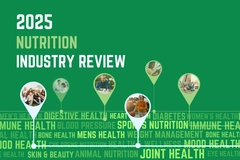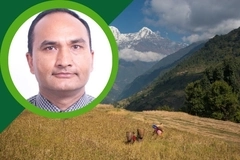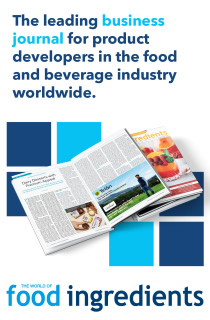
- Industry news
Industry news
- Category news
- Reports
- Key trends
- Multimedia
Multimedia
- Journal
- Events
- Suppliers
Suppliers
- Home
- Industry news
Industry news
- Category news
- Reports
- Key trends
- Multimedia
Multimedia
- Events
- Suppliers
Suppliers
SOFI 2025: More people afford healthy diets but inflation and budget cuts jeopardize gains

Persistent inflation is shaping people’s diets worldwide, driving up the cost of nutritionally dense foods, according to the latest State of Food Security and Nutrition in the World (SOFI) report. This issue is especially noticeable in low-income countries, as food price inflation continues to surpass overall inflation. Nutrition Insight talks to Action Against Hunger to explore the implications of these findings for global nutrition.
The costs of healthy diets worldwide have increased since 2017, averaging US$4.46 in purchasing power parity per person per day in 2024.
Africa experienced the highest increase from 2023 to 2024, according to UN Food and Agriculture Organization (FAO) and World Bank data. Conversely, improvements in affordability have been recorded in Asia and marginally in Latin America and the Caribbean, North America, Europe, and Oceania.
Because of higher incomes, in the last two years, an additional 80 million people could afford healthy diets despite rising costs. Last year, about 2.60 billion people couldn’t afford a healthy diet, down from 2.68 billion in 2022. The report indicates that variations in inflation may have played a role in the high levels of unaffordability in some regions.
The report highlights the governments and the central banks’ fiscal and monetary interventions during the global pandemic and the war in Ukraine as some of the main drivers of inflation.
Meanwhile, the report underscores that nutritionally dense foods cost more. The disparity between food groups shows oils and fats, basic starchy staples, legumes/nuts and seeds, and confectionery costing less than animal-source foods, fruits, and vegetables.
Positive trend but uncertain progress
The SOFI report differs from last year in that hunger and malnutrition have decreased globally. This is especially prominent in Brazil, where undernourishment fell below the 2.5% threshold for inclusion in the FAO Hunger Map.
“The percentage of people who faced hunger decreased from 8.5% in 2023 to 8.2% in 2024,” Victor Bushamuka, senior technical advisor on Food Security and Livelihoods with Action Against Hunger, tells us. Yet, concerns about budget cuts, rising food prices, anemia, climate change, and conflicts persist.
“Serious concerns remain as to whether the observed positive trend will continue, given the significant budget cuts to food systems assistance countries are experiencing in 2025.”
“We should be concerned by the rising food prices, especially those of healthy diets, as well as the continued increase in anemia prevalence among women. Additionally, climate change and conflicts in various regions worldwide are having a significant impact on food security and nutrition,” he warns.
SOFI reveals that 22 million fewer people may have experienced hunger in 2024 than in the years before, but progress was not consistent globally. Bushamuka adds that more people are able to afford a healthy diet. “However, Africa remains an exception, where the number of people unable to afford a healthy diet is increasing.”
 The cost of basic starchy staples is consistently lower than that of more nutrient-dense food groups (Image credit: SOFI).“Progress was also made in reducing malnutrition among children, including both stunting and wasting, which is partially attributed to an increase in exclusive breastfeeding,” he adds.
The cost of basic starchy staples is consistently lower than that of more nutrient-dense food groups (Image credit: SOFI).“Progress was also made in reducing malnutrition among children, including both stunting and wasting, which is partially attributed to an increase in exclusive breastfeeding,” he adds.
Long-term nutrition system-building
Bushamuka notes that although the global reports like SOFI 2025 provide information on progress toward ending hunger and malnutrition, they have some limitations regarding nutrition indicators.
“There is a strong focus on undernourishment, which is based on calorie intake and does not fully capture the nuances of malnutrition. It also does not cover the complexity of nutrition, such as dietary intake, food behaviors, anthropometric measures, and biomarkers.”
“Until very recently, it neglected to measure nutrient quality, as well as the cost and affordability of healthy diets,” he adds.
Bushamuka explains that the framing of food insecurity has shifted from a simple focus on food supply and hunger relief to a more comprehensive understanding of the complex factors that contribute to food insecurity and malnutrition on the long-term.
“First, we started by focusing primarily on the availability of food at the national level. We then recognized that availability alone doesn’t guarantee that enough food gets to families and shifted toward a more multidimensional approach of availability, access, utilization, and stability.”
“Next, we moved from focusing solely on hunger to attempting to address broader nutrition and food systems challenges. We then went beyond concentrating on immediate relief to building sustainable long-term resilience. We realized the growing impact of climate change on food insecurity and enhanced measurement and monitoring.”
He affirms that the shift to long-term food and nutrition system-building methods is happening.
 Ultra-processed foods are more affordable than less processed alternatives (Image credit: SOFI).However, Bushamuka sees gaps in hunger and food security indicators and methodologies. They include data scarcity and inconsistency, which are characterized by incomplete data, disparities in data collection, and challenges in collecting high-quality data in low-income countries.
Ultra-processed foods are more affordable than less processed alternatives (Image credit: SOFI).However, Bushamuka sees gaps in hunger and food security indicators and methodologies. They include data scarcity and inconsistency, which are characterized by incomplete data, disparities in data collection, and challenges in collecting high-quality data in low-income countries.
Other gaps include issues in methodology and scope limitations with subjective weighting schemes, minimal use of outcome-based indicators, absence of contextual benchmarking, and lack of measurement of food insecurity in children.
Inflation impacts on household and SDGs
Bushamuka underlines the negative impacts inflation has on nutrition security and challenges progress toward UN Sustainable Development Goals (SDG) targets. “Inflation can make food, especially nutritious foods, more expensive and often out of reach for low-income households.”
“When low-income households face high food prices, they often reduce their food consumption, especially of nutritious foods, and turn to cheaper, less healthy alternatives, which can lead to food insecurity.”
“The SDG targets 2.1 and 2.2 aim to create a world free from hunger and to eradicate all forms of malnutrition. Increased inflation will set back any progress toward achieving these SDG targets, as it will inevitably exacerbate food insecurity, hunger, and malnutrition,” he explains.
Inflation also makes government and NGO assistance programs more expensive, adds Bushamuka.
Unaffordability in Africa and South Asia
The Healthy Diet Basket recently estimated that 2.8 billion people worldwide can’t afford the cheapest nutritious meals. It found that even the cheapest healthy diets cost more than low-income people can afford. This was particularly affecting 80% of the population in African countries.
The SOFI report reveals that the affordability of nutritious foods varies across regions. Bushamuka explains that low-income countries in Africa and South Asia are experiencing the highest rates of unaffordability. “When global populations cannot afford a healthy diet, it contributes to various forms of malnutrition, including undernutrition, micronutrient deficiencies, and obesity.”
“It also constitutes a significant risk factor for chronic diseases like heart disease, type 2 diabetes, and some cancers. In addition, poor diets can reduce productivity and lead to economic losses.”
Responsibilities to reverse trends
Bushamuka says that all stakeholders, including governments, NGOs, the private sector, and individuals, are responsible for reversing the global trends of hunger and malnutrition.
“The private sector, including businesses and cooperatives, has a responsibility to contribute to a sustainable food system, strive for fair trade, and promote responsible marketing of food products.”
“Every individual has to play a role in addressing food insecurity and malnutrition by making sustainable food choices, supporting local farmers, reducing food waste, and advocating for policy changes,” he states.
According to Bushamuka, government policies and programs should ensure access to healthy diets, promote sustainable agriculture, invest in infrastructure, and provide social protection measures.
UN organizations are needed to coordinate global efforts, while NGOs at the grassroots must support vulnerable communities with aid and sustainable agriculture and advocate for policy change.

















